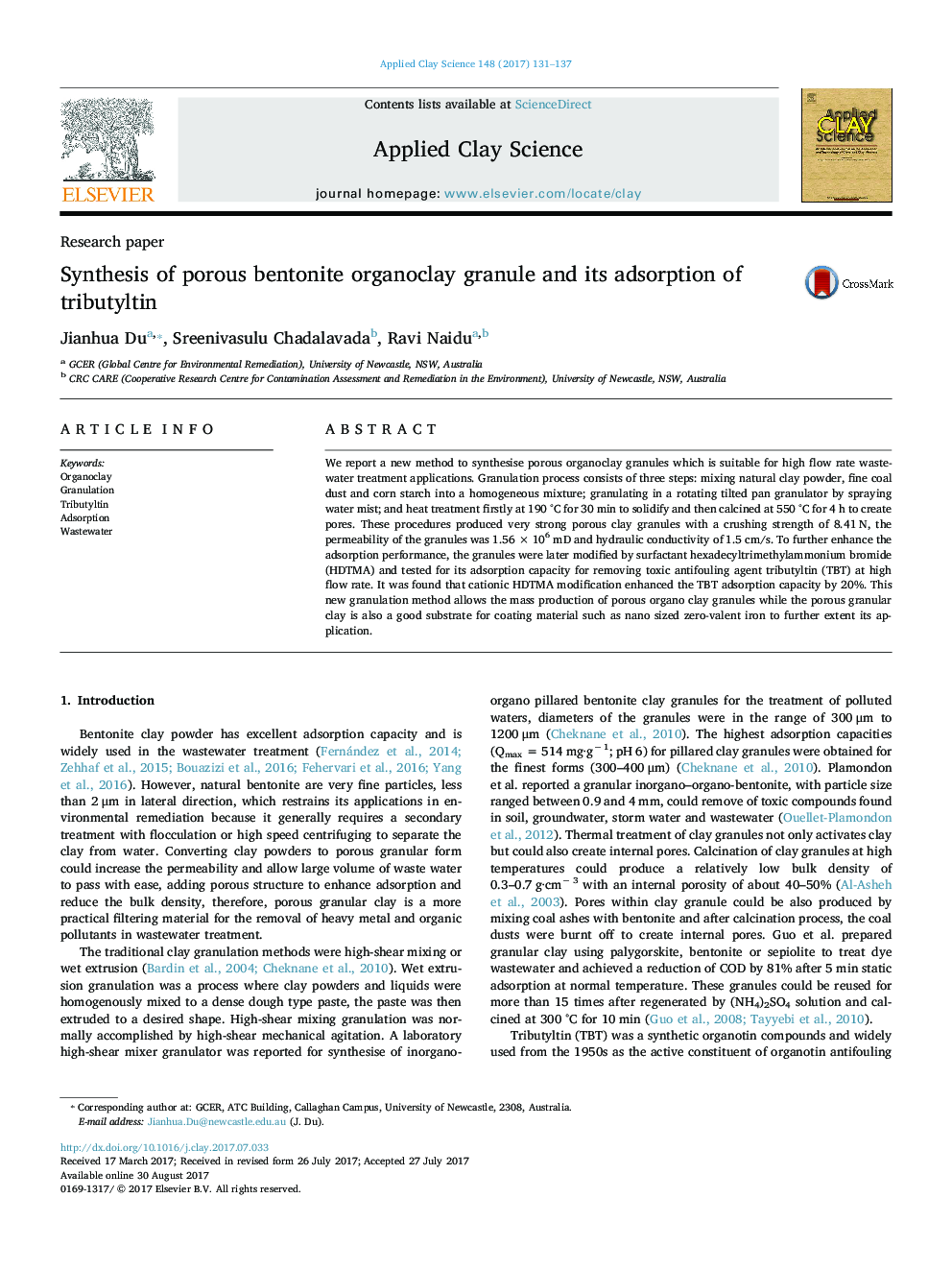| Article ID | Journal | Published Year | Pages | File Type |
|---|---|---|---|---|
| 5468534 | Applied Clay Science | 2017 | 7 Pages |
â¢A new porous organoclay granulation process which allows mass production.â¢Clay granule and pore sizes are controllable and suitable for high water flow rates treatment.â¢Adsorption capacity and hydraulic conductivity was tested.
We report a new method to synthesise porous organoclay granules which is suitable for high flow rate wastewater treatment applications. Granulation process consists of three steps: mixing natural clay powder, fine coal dust and corn starch into a homogeneous mixture; granulating in a rotating tilted pan granulator by spraying water mist; and heat treatment firstly at 190 °C for 30 min to solidify and then calcined at 550 °C for 4 h to create pores. These procedures produced very strong porous clay granules with a crushing strength of 8.41 N, the permeability of the granules was 1.56 Ã 106 mD and hydraulic conductivity of 1.5 cm/s. To further enhance the adsorption performance, the granules were later modified by surfactant hexadecyltrimethylammonium bromide (HDTMA) and tested for its adsorption capacity for removing toxic antifouling agent tributyltin (TBT) at high flow rate. It was found that cationic HDTMA modification enhanced the TBT adsorption capacity by 20%. This new granulation method allows the mass production of porous organo clay granules while the porous granular clay is also a good substrate for coating material such as nano sized zero-valent iron to further extent its application.
